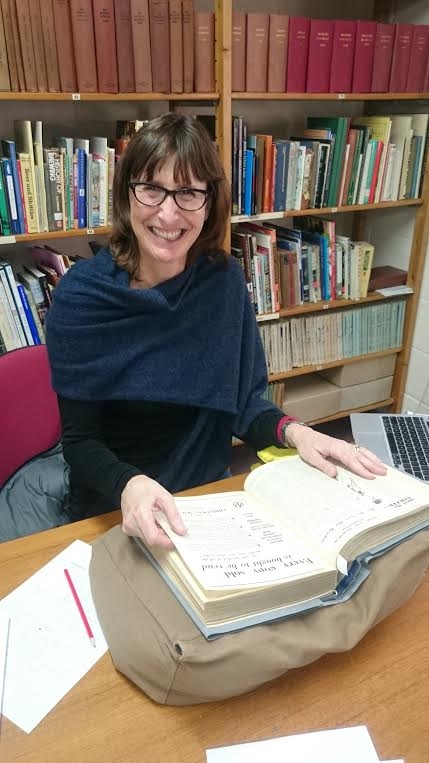HAT demonstrates worldwide appeal hosting New Zealand researcher to explore the British Empire's 'White Dominions'
It was indeed a particular pleasure to welcome Dr Felicity Barnes, Senior Lecturer in History who travelled all the way from the at the University of Auckland in New Zealand and visited HAT as part of a research visit to the UK.

Dr Barnes has written on New Zealand’s cultural links with London, and is now working on a new book exploring the connections between imperial consumption and imperial identities. She is particularly interested in the commodity marketing campaigns run in Britain by Australia, Canada and New Zealand - some of the empire’s old ‘White Dominions’ - and the ways their advertising reveals a distinctive type of imperial identity. Her work focuses on the interwar period, when all three dominions were involved in large-scale campaigns to persuade British consumers to buy their fruit, meat and dairy products. It was also a time when the meaning and nature of empire seemed to be in flux. Something as ordinary, and as overlooked, as apple or butter advertising might provide a new window on the state of empire in this era.
Dr Barnes goes on to explain more about what she found at HAT:
“HAT’s archives are full of treasures for this sort of study. National archives might keep the records of the various marketing agencies, but they rarely hold much actual advertising material. Yet the imagery is crucial in understanding the sort of identities constructed by advertising. The collection of Mather and Crowther scrapbooks contained invaluable examples of Canadian and Australian advertising, including the late 30s ‘Canada Calling’ campaign and the very revealing ‘British to the core’ campaigns for dominion apples. Unusually, it turned out that both Canada and Australia shared not only the same agency, but the same slogan for their fruit!
The business of imperial commodity advertising was also fleshed out through using HAT’s extensive collection of The Advertiser’s Weekly. Their round ups of news, new campaigns, and agency changes made it possible to trace the progress and extent of this advertising. This is important, as despite the size of these government-sponsored campaigns they have been almost completely forgotten by historians, adding to a general tendency to see advertising not really ‘coming of age’ until the post war period. These campaigns demonstrate not only the continued commitment to the British market by the increasingly independent dominions, but the significance of advertising in creating and sustaining markets. They also show the great value of HAT’s collections: they may be a fair distance from New Zealand, but it was definitely worth the visit!”
Such examples of the ‘Canada Calling’ campaign, as we understand it, form part of a unique collection.
For any research queries relating to the history of advertising please contact
enquiries@hatads.org.uk
« All News Articles